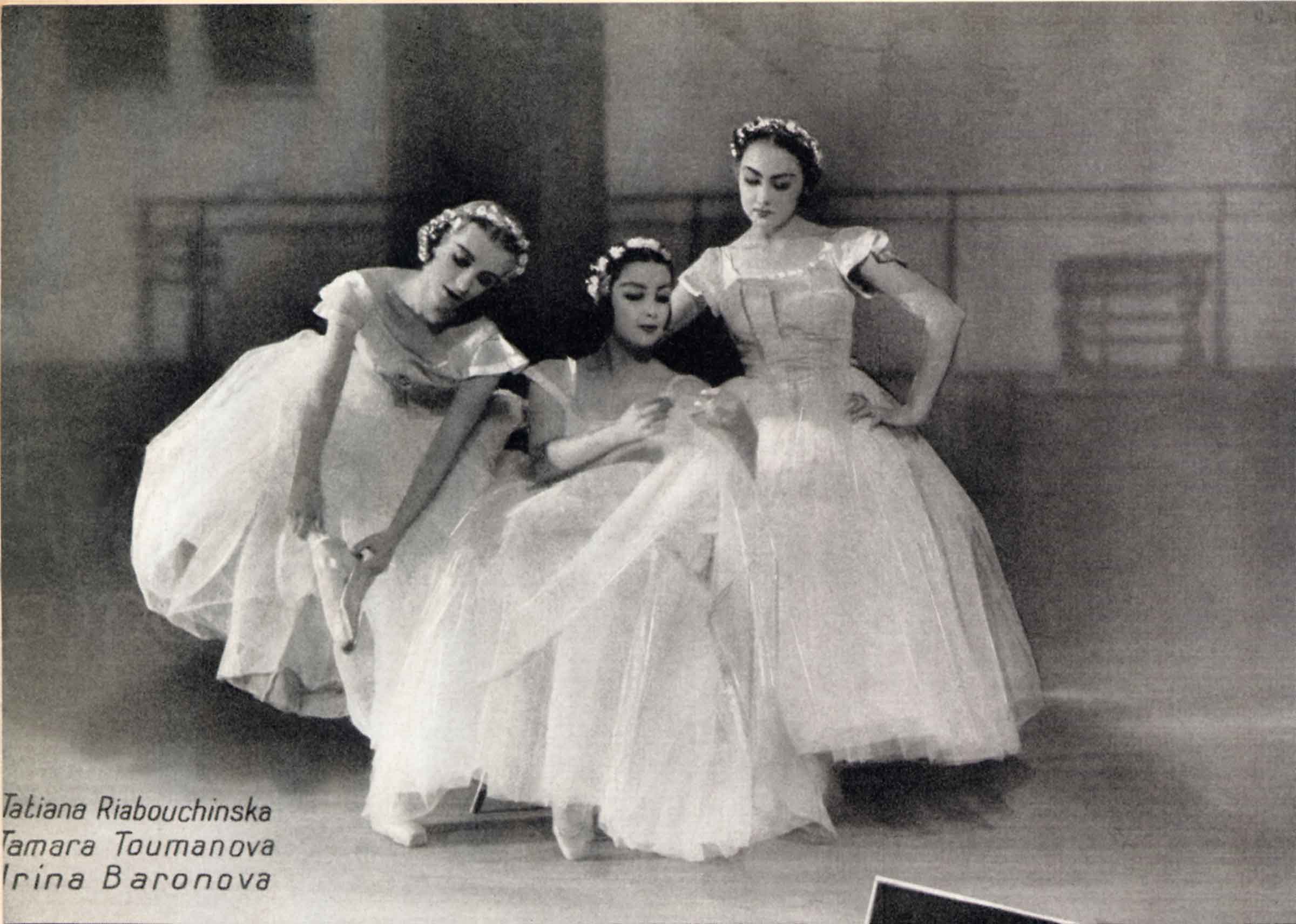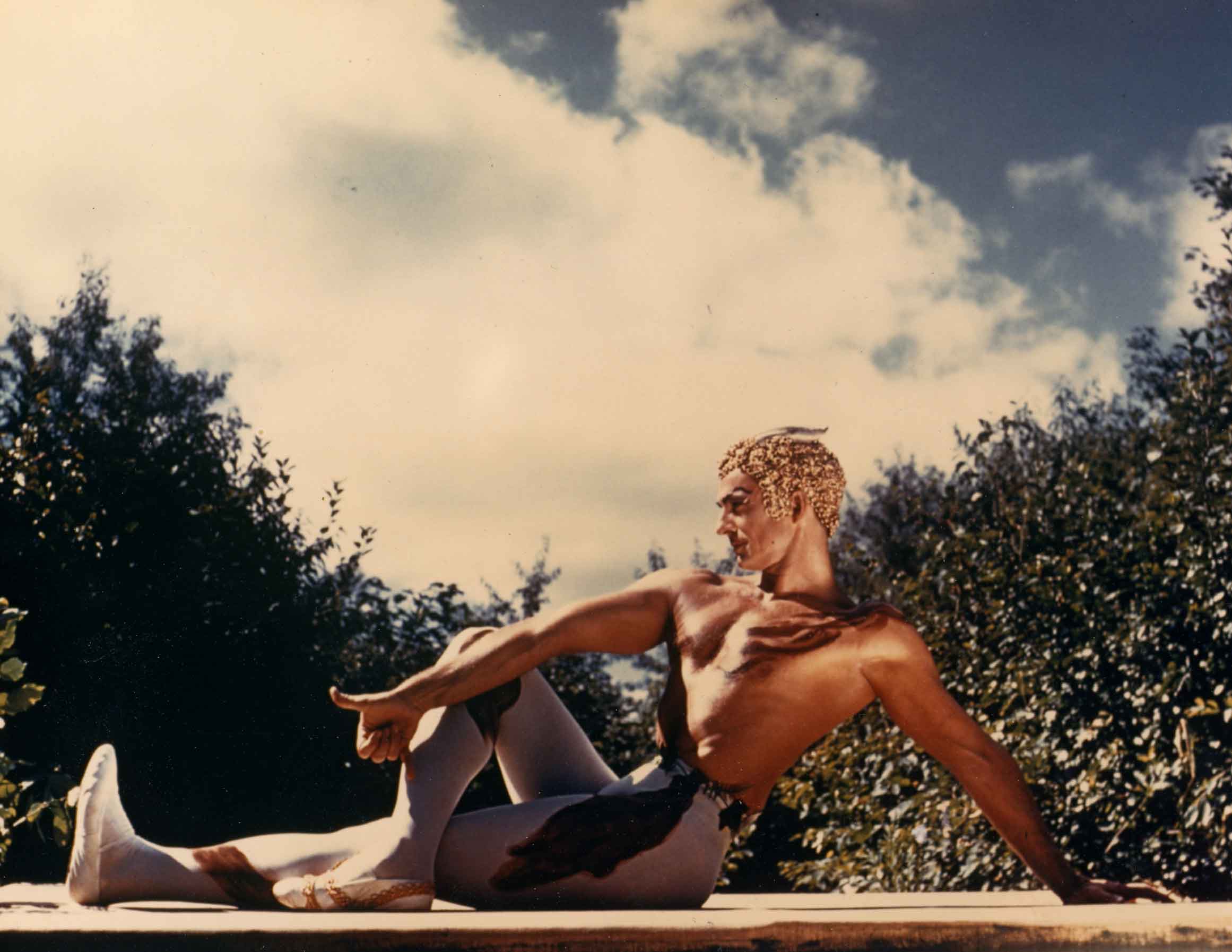 Joel Lobenthal of the NY Sun: “As Gamzatti, Gillian Murphy imprinted infallibly etched images of pride, love, and ruthless will. She has studied the role so thoroughly and respectfully that even when she brings her own time and culture to Gamzatti’s rarified reactions and body language, they don’t coarsen her performance, but rather add to its vitality. Ms. Murphy has refined her natural facility for turning, so that her multiple fouettes in the Pas d’Action coda were smooth as silk, and her pirouettes in her last act solo, followed by an echoing spiral into the upper body, were mesmerizing.” Or, says Jennifer Dunning of the NYT: “Once again Ms. Murphy made Gamzatti as pitiable a creature as she is evil, but this is a ballerina who needs a substantial work created for her.” Yes, it’s ABT’s summer season time at the Met, and once again Gill is rocking the house. I’ve caught her in Othello and The Dream (that’s her as Titania at right) thus far, and both times she was grand. If you’re in the NYC area and looking for an evening out, check the listings — you won’t be disappointed.
Joel Lobenthal of the NY Sun: “As Gamzatti, Gillian Murphy imprinted infallibly etched images of pride, love, and ruthless will. She has studied the role so thoroughly and respectfully that even when she brings her own time and culture to Gamzatti’s rarified reactions and body language, they don’t coarsen her performance, but rather add to its vitality. Ms. Murphy has refined her natural facility for turning, so that her multiple fouettes in the Pas d’Action coda were smooth as silk, and her pirouettes in her last act solo, followed by an echoing spiral into the upper body, were mesmerizing.” Or, says Jennifer Dunning of the NYT: “Once again Ms. Murphy made Gamzatti as pitiable a creature as she is evil, but this is a ballerina who needs a substantial work created for her.” Yes, it’s ABT’s summer season time at the Met, and once again Gill is rocking the house. I’ve caught her in Othello and The Dream (that’s her as Titania at right) thus far, and both times she was grand. If you’re in the NYC area and looking for an evening out, check the listings — you won’t be disappointed.
Category: Ballet
Pas de Vingt-Huit.
A very happy (and belated) birthday to my sister Gillian, who turned 28 yesterday. (She, I, and her friends and colleagues celebrated with a dinner at Rosa Mexicano last night.) Which, reminds me: tickets are now on sale for ABT’s 2007 Spring season at the Met (May 14-July 7), in which Gill will be performing in Romeo and Juliet, Othello, and several other new pieces. Get ’em while they’re hot.
Ethan elocutes.
“Not to be crass, but Ethan Stiefel, the American Ballet Theatre principal who starred in the film Center Stage, has had a shitty year.” Time Out: New York publishes an extended interview with my sister’s boyfriend, Ethan. Which reminds me: ABT’s City Center season is now in full swing, so get your tickets while you can. (I’ll be going several times over the next few weeks.)
Sterling Hayden.
Sylvia Path.
“Fonteyn could not jump the way ABT’s Gillian Murphy did on Monday night…” My sister Gill (recently interviewed here) gets a pair of nice reviews today for her recent turn in ABT’s Sylvia. ‘Gillian Murphy, who danced the title role on Monday, was born to play Sylvia…even early in her career she had a gift for ornamenting bold, bravura dancing with filigree musical phrasing, and that gift serves her well.”
Surfacing.
Hey all. So, as you may have noticed from the radio silence, it’s been hectic in these parts of late, what with trips out of town and around town, guests visiting, my sister Gill‘s ABT season at the Met, and many errands to run and a rather large work project to complete before I hit the road for a dissertation research trip later this week. That being said, the work wave seems to have crested, so hopefully normal update patterns should resume around here in very short order.
Lake Effect.

As spotted in the new Money magazine (p. 100), my sister Gillian and her longtime boyfriend Ethan are featured in ABT‘s ad campaign for their upcoming Spring season at the Met — Tickets are on sale now.
Dance Dance Evolution.
“‘People are born to dance,’ Ebstein told Discovery News. ‘They have (other) genes that partially contribute to musical talent, such as coordination, sense of rhythm. However, the genes we studied are more related to the emotional side of dancing — the need and ability to communicate with other people and a spiritual side to their natures that not only enable them to feel the music, but to communicate that feeling to others via dance.” Looks like the Red Shoes are just a placebo — According to recent research at Hebrew University’s Scheinfeld Center for Genetic Studies, some people are just hardwired to dance. Now if only they could figure out why some people start conga lines or insist on breaking into the Electric Slide. (Via Dangerous Meta.)
Dance Hall Days.
 On my sister‘s advice, I went to go see Ballets Russes yesterday evening at the Film Forum, and she was right: It’s a stunning film, one that I’d even recommend to people who have little-to-no interest in ballet. Like the best documentaries — and this is the best I’ve seen in some time — Ballets Russes transcends its immediate topic to capture larger and more ephemeral truths. The movie not only brings to life a bygone era in the arts and helps to explain the current popularity of ballet in the US and around the world — it also powerfully reflects on both the inexorable passing of time and the timelessness of dance, its magical capacity to wash away years and overcome human frailty. Like a perfectly executed ensemble piece, Ballets Russes can take your breath away.
On my sister‘s advice, I went to go see Ballets Russes yesterday evening at the Film Forum, and she was right: It’s a stunning film, one that I’d even recommend to people who have little-to-no interest in ballet. Like the best documentaries — and this is the best I’ve seen in some time — Ballets Russes transcends its immediate topic to capture larger and more ephemeral truths. The movie not only brings to life a bygone era in the arts and helps to explain the current popularity of ballet in the US and around the world — it also powerfully reflects on both the inexorable passing of time and the timelessness of dance, its magical capacity to wash away years and overcome human frailty. Like a perfectly executed ensemble piece, Ballets Russes can take your breath away.
After a brief introduction to the dancers of the Ballets Russes, who reconvene in New Orleans in 2000, the documentary shifts to 1929, with the death of renowned ballet impresario Serge Diaghilev and the formation of the Ballet Russes de Monte Carlo, a successor company to Diaghilev’s famed troupe. Briefly artistic-directed by a young George Balanchine (who’ll show up again in the story, after a stint training elephants at the circus) and headlined by a trio of newly-discovered Russian “baby ballerinas,” the Ballet Russes de Monte Carlo soon splits into rival companies — one headed by dancer-choreographer Leonide Massine, the other manned by financial backer Colonel Wassily de Basil. After wrangling over ballerinas and staffing their respective companies with ringers from other ensembles, the two Ballets Russes duel over London audiences and US contracts, until the exigencies of World War II force both to travel West. There, they attempt to stave off financial collapse by spreading the ballet meme (via steam train and Hollywood song-and-dance) across the New World.
The story of the Ballets Russes is told not only through an impressive amount of archival dance footage (which loses none of its forcefulness despite the occasional grainy stock), but also via interviews with the surviving dancers of the rival troupes, and herein lies the documentary’s considerable dramatic heft. Every single one of the many interviewees — which include Alicia Markova, Maria Tallchief, and Frederic Franklin (who still appears in ABT’s “Swan Lake” well into his nineties) — comes off as a vivacious, multifaceted personality with tales to tell, and it’s extraordinary to watch them shake off the years when speaking of their experiences or dancing. Former ballerina (and coquettish heartbreaker) Nathalie Krassovska — who, like several of the participants, passed away since the film was finished — lights up like a little girl when she shows off her dance studio. Later, she and George Zoritch (in his prime at right, now an eighty-something gym rat in Tuscon, AZ) attempt a pas de deux from Giselle, and, although it’s clearly a physical struggle, it’s endearing to watch them rejoice in their old, shared language.
And the same goes for many other participants in the film, who have spread across the globe in a ballet diaspora since the collapse of the company in 1962. Aged, wizened faces break into impish grins when an old memory surfaces, and, when these former stars show off a dance flourish to their students, it’s exhilarating to see their enthusiasm, and the flashes of grace that accompany it. In all honesty, I’d like to have heard more about the original Ballet Russes here (Diaghilev’s outfit), and the film loses focus somewhat in the fifties and sixties. (More of a general sense of history would’ve been nice, too — The Depression isn’t mentioned, Hitler and WWII seem to show up out of the blue, and, other than a fascinating aside involving black dancer Raven Wilkinson’s travails with the KKK during one of the Ballet Russes’ southern swings, there’s very little outside context here.) Nevertheless, Ballets Russes is an amazing documentary and an impressive testament to the idea that, while dancers come and go, the dance is forever, and to embrace it as a calling is a life well lived.
Grace in Gotham.
“As quintessentially American as Ms. Part is Russian, Gillian Murphy joined ABT in 1996, instantly raising our national banner of strong, brisk, technical prowess.” By the way, my sister’s fall ABT season began on Wednesday, so if you’re in the New York area and looking to partake of some choice offerings of world-class ballet, head on down to City Center. The Fall Repertoire includes Afternoon of a Faun, Apollo, Dark Elegies, Gong, The Green Room, In the Upper Room, Kaleidoscope, Rodeo, and Les Sylphides.

